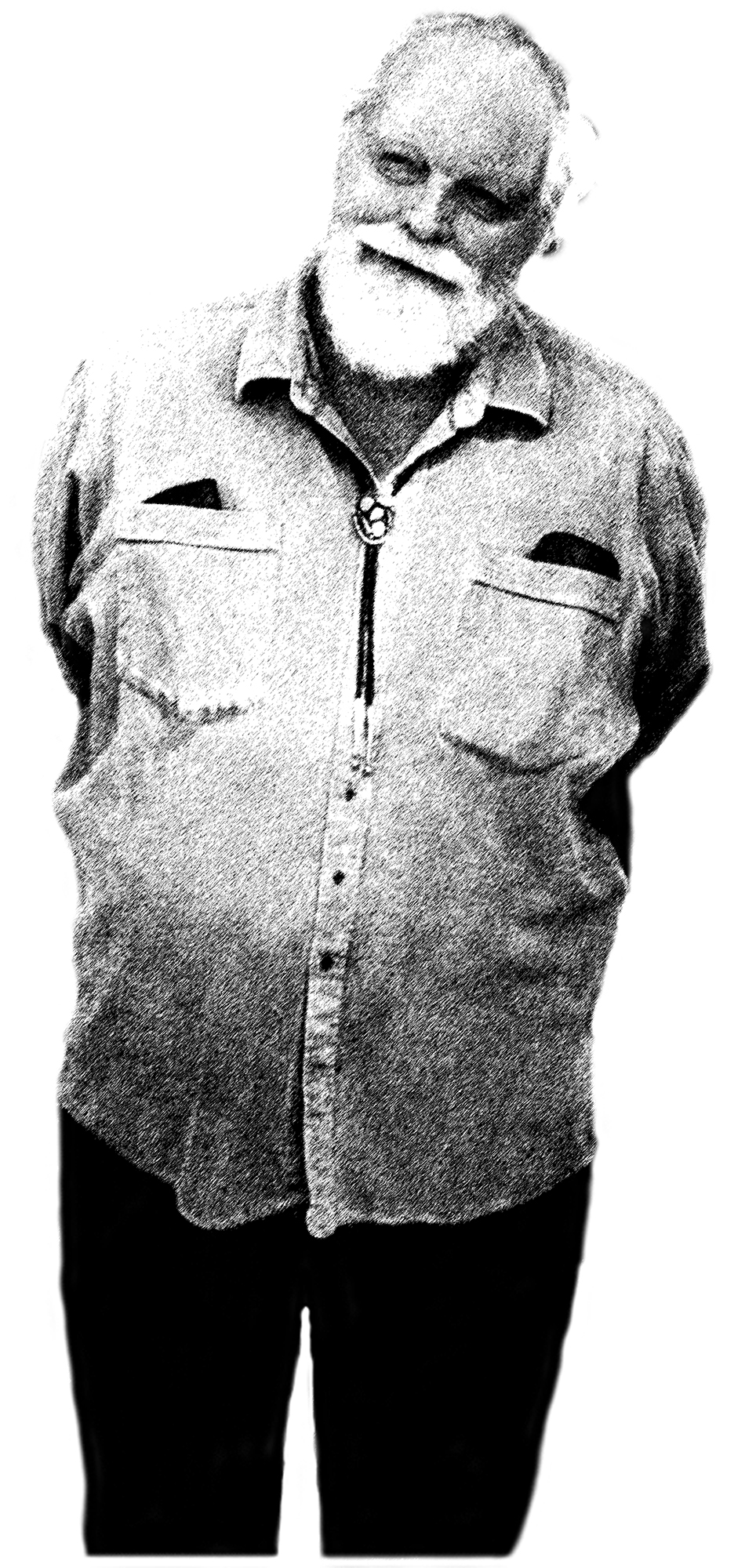The HMC American Gamelan: "Lou Harrison, A Birthday Tribute"
Aron Kallay, piano
Maggie Parkins, cello
HMC American Gamelan, Bill Alves, director
Sunday, November 12, 2017, 7 p.m.
Drinkward Recital Hall

Lou Harrison. Photo provided by the HMC American Gamelan.
PROGRAM
Ladrang Epikuros
Lou Harrison
Sikala-Niskala
Jack Van Zandt
Aron Kallay, piano
Gending Cavafy
Lou Harrison
Solo for Tenor Bells
Lou Harrison
Bill Alves, bells
A Little Gamelan for Katherine Litz
Lou Harrison
A Glyph
Lou Harrison
Aron Kallay, piano
Movement 2 from Concerto for Piano with Javanese Gamelan
Lou Harrison
Aron Kallay, piano
Elegy for Lou Harrison
Bill Alves
Maggie Parkins, cello
This program is one of a series honoring the centennial of Lou Harrison (1917-2003), one of the great American composers of the twentieth century and a pioneer in the art of cultural hybrids and alternate tunings. As a young man in California he studied with Henry Cowell and Arnold Schoenberg and with his friend John Cage established the first concert series devoted to new music for percussion. In 1943, Harrison moved to New York, where he made a name for himself as a composer, critic, and conductor, premiering the Third Symphony of Charles Ives. However, to escape the stress and noise of the city, he moved back to California in 1953, where his relative isolation was the perfect environment to study his new interests, Asian music and just intonation. In the 1960s he traveled to Asia, studying Korean and Chinese music. In the 1970s, he began studying and performing Javanese gamelan music, and in the last decades of his life, the world began to catch up with Lou Harrison, who by the time of his death was recorded on dozens of CDs and was the subject of many festivals and tributes. In 2001 he was the guest of honor at the MicroFest conference here in Claremont.
Lou Harrison was first entranced with the bell-like tones of the Javanese gamelan orchestra as a young man in the 1930s and this infatuation continued as he studied Asian music in the 1950s and 60s. Unwilling to wait until he had access to such instruments, Harrison and his partner Bill Colvig built their own version of a gamelan, which they called an "American Gamelan" in the early 1970s. Finally, in the summer of 1974, he had the opportunity to study and play a traditional Javanese gamelan in Berkeley California, and soon after he met one of the great Javanese masters of this music, Ki K. P. H. Wasitodiningrat, familiarly known as Pak Cokro. It was Pak Cokro who first encouraged Harrison that he write for the Javanese gamelan, and Harrison soon began turning out a large body of works for the ensemble. In these works he often reflected the ideal meeting of East and West by including Western instruments in concerto or concerto-like forms. By the 1980s he would say that if he had his way, he would never compose for any other medium, although he would when commissions began to follow his increasing fame.
Ladrang Epikuros (1981). Between 1976, when he first began composing for Javanese gamelan, and 1983, Harrison wrote dozens of works for the ensemble, often in honor of figures from classical Greece and Rome. Here “ladrang” refers to the Javanese form in which there are 32 beats between each tolling of the large gong, although this work does not entirely follow the traditional form. Epikuros was one of Harrison’s favorite philosophers.
Sikali-Niskala (1998). Sikali-Niskala refers to the seen and unseen worlds of Balinese philosophy, a duality frequently reflected in their music and other arts. I layered onto this tradition the contrast of the Western keyboard concerto, one of the elements of the “seen” (or heard) world of Balinese music, which is no more important than their counterparts in the unseen world of the spirituality of music.
Gending Cavafy (1980). This work honors Constantine Cavafy, the Egyptian poet, who, like Harrison, frequently wrote nostalgically of the faded glories of Greece and Rome. A version with singers uses Harrison’s text about Cavafy himself lost in the false world that he conjures about the decadence of the fading Ottoman Empire.
Solo for Tenor Bells (1972). Harrison used the “American Gamelan” instruments he and Colvig had built for various pieces in the 1970s, including this exploration of tuning and mode he created for San Jose percussionist Anthony Cirone. Kathryn Jones (’16) helped build this copy of the instrument.
A Little Gamelan for Katherine Litz (1952). In 1951-52, Harrison taught at Black Mountain College, an experimental arts school in North Carolina, where he collaborated with the choreographer Katherine Litz. Although he had never studied gamelan music except from books and recordings, he composed this evocation of Balinese music on piano for her classes. I thought it would be fitting to arrange it for actual gamelan instruments, and we will hear the premiere of this version tonight.
A Glyph (1951). Harrison wrote this piece also for dancer Katherine Litz to be played by the adventurous piano virtuoso David Tudor. At various times the pianist plays on the strings inside the piano, sometimes creating harmonics by pressing a wooden block against them, and plays various percussion instruments.
Concerto for Piano and Javanese Gamelan (1987). In Harrison’s 1985 concerto for piano and Western orchestra, which shows a bit of the romantic side of Harrison's multifaceted musical personality, he applied some gamelan techniques to the Western orchestra. Shortly after he decided to try out the form with the gamelan orchestra. The result retains some of the Brahmsian expressivity of the earlier concerto, but now contained within classical Javanese forms.
Elegy for Lou Harrison (2003). This work in honor of Harrison reflects his great legacy of pairing instruments from Asia with those of Europe.